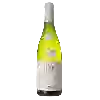
Winery Jean-Philippe MarchandLe Traditionnel Crémant de Bourgogne Rosé
This wine generally goes well with poultry, appetizers and snacks or lean fish.
Food and wine pairings with Le Traditionnel Crémant de Bourgogne Rosé
Pairings that work perfectly with Le Traditionnel Crémant de Bourgogne Rosé
Original food and wine pairings with Le Traditionnel Crémant de Bourgogne Rosé
The Le Traditionnel Crémant de Bourgogne Rosé of Winery Jean-Philippe Marchand matches generally quite well with dishes of shellfish, poultry or appetizers and snacks such as recipes of cataplana with seafood, chicken drumstick with bacon or tuna wraps.
Details and technical informations about Winery Jean-Philippe Marchand's Le Traditionnel Crémant de Bourgogne Rosé.
Discover the grape variety: Pinot noir
Pinot noir is an important red grape variety in Burgundy and Champagne, and its reputation is well known! Great wines such as the Domaine de la Romanée Conti elaborate their wines from this famous grape variety, and make it a great variety. When properly vinified, pinot noit produces red wines of great finesse, with a wide range of aromas depending on its advancement (fruit, undergrowth, leather). it is also the only red grape variety authorized in Alsace. Pinot Noir is not easily cultivated beyond our borders, although it has enjoyed some success in Oregon, the United States, Australia and New Zealand.
Informations about the Winery Jean-Philippe Marchand
The Winery Jean-Philippe Marchand is one of wineries to follow in Crémant de Bourgogne.. It offers 176 wines for sale in the of Crémant de Bourgogne to come and discover on site or to buy online.
The wine region of Crémant de Bourgogne
Recognized in 1975, the appellation crémant-de-bourgogne replaced the Sparkling wines whose quality was not very homogeneous. Its geographical area, very vast, covers more than 300 communes, of Châtillonnais, with the borders of Champagne auboise, with Beaujolais included. The AOC imposes conditions of harvest and elaboration as strict as those of the Champagne region and copied on this one, the difference residing in the duration of Maturation on lees, which is of nine months minimum, against twelve for the champagne. The Grape varieties used also bring Crémant-de-Bourgogne closer to its illustrious Champagne model, for although all the varieties of the region can be used, Pinot Noir and Chardonnay are favoured.
The wine region of Burgundy
Bourgogne is the catch-all regional appellation title of the Burgundy wine region in eastern France ("Bourgogne" is the French name for Burgundy). Burgundy has a Complex and comprehensive appellation system; counting Premier Cru and Grand Cru titles, the region has over 700 appellation titles for its wines. Thus, Burgundy wines often come from one Vineyard (or several separate vineyards) without an appellation title specific to the region, Village or even vineyard. A standard Burgundy wine may be made from grapes grown in one or more of Burgundy's 300 communes.
The word of the wine: Maccabeo
See macabeu.














